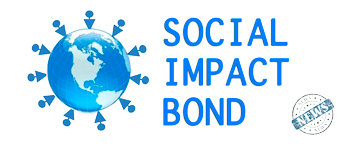More on that wondrous news on regulatory relief from SEC for SIBs (see also my comments here and here) while there is a look at SIBs and the third age too, happy reading!
SEC Clears Path For Social Impact Bonds
Compliance Intelligence
SEC will allow an organization to sell a new type of financial instrument designed to fund socially-positive projects without having to register as a broker/dealer. The no-action relief from the SEC’s Division of Trading and Markets came in response to a request from WilmerHale on behalf of its client Social Finance.
Social Impact Bonds And Aging In Place
Amara Rose – HECM World
We’ve discussed how seniors are adapting to technology with amazing aplomb, and how technology is creating apps and resources to help people age in place more securely. But what hasn’t been explored much until now is how a shift in business model mindset can positively affect aging — especially aging in place. It’s akin to the concept of Story Theory discussed last month, in which a perceptual shift can lead to a new outcome.
A social impact bond is “a promise by a funder (usually the government) to pay a group of service providers (usually non-profits) for delivering a specific social outcome. The payment is generally aligned with the outcomes — if the project delivers great results, the payments can be significant; if the project doesn’t deliver, the government pays nothing, or a small amount.”
This model has worked well in keeping young offenders from recidivism, for example. But for the senior population, business needs to take the reins in order to create a true, scalable social impact. Why?
Innovation is essential. The vast majority of elders do not want to end their days in nursing homes, alone, afraid, and among strangers. They want to remain in the home they’ve lived in and loved for decades, which is why a reverse mortgage makes sense for many.
It requires a multi-faceted approach. A reverse mortgage, while providing the financial cushion that can ease worries about later life resources, does not by itself provide the services and support seniors need to live well. There are social, economic, medical as well as technological factors involved in maintaining safe, healthy, independent seniors in community.
The number of programs and apps available to help seniors age in place safely is mushrooming, from personal protection systems that alert medical personnel if a senior falls or needs emergency assistance, to home monitoring devices that reassure family members of a loved one’s well being by letting them know when a senior activates the coffee pot or turns on the lights. There are also sites geared toward finding senior companionship and travel partners and keeping money safe from the unscrupulous.
A viable social impact bond for aging in place needs the right metrics and benchmarks, such as doctor visits and a quality of life index, in order to gauge its success. As six people a minute turn 60, it’s an idea whose time is now. We’re ripe for a new story about how to age at home more effectively.
